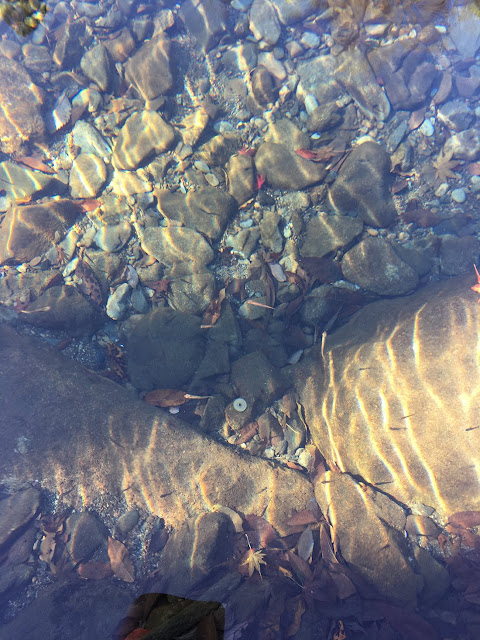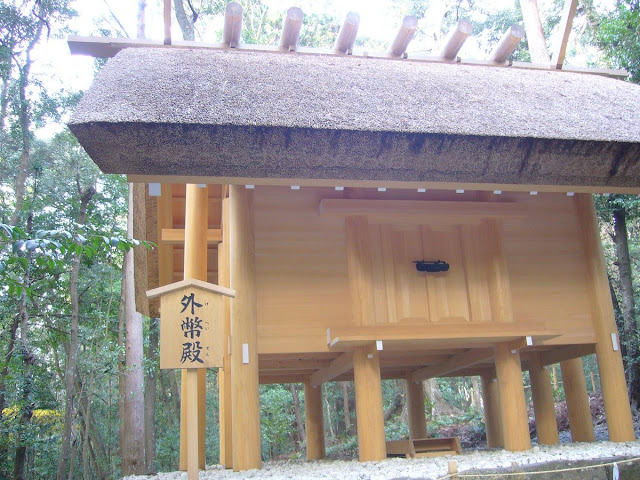Ohayō! The next morning, I adapted my reflexes to Shirlyn's car: the steering wheel was on the right, and she drove on the left side of the road.
It was normal for her, since Singapore's traffic does the same thing, as a result of its prior colonization by the British. (It also remains part of the Commonwealth of Nations, headed by England's Queen Elizabeth).
You might think that the Japanese drive on the left side of the road because their ancestors modeled themselves on British society in the 1860s. In truth, they drive on the left side because their ancestors walked on the left side during the 1600s's era of samurai. Samurai weapons hung on their left sides, so people who approached them passed on the right side of the samurai. Ironically, that behavior was reinforced when Japan used British aide to create its railroads, and the British used their model of having outbound trains use the left-side tracks.
*To see when we experienced driving on the left side of the road in India (as a result of British influence), please use this link:
As a superb driver, Shirlyn sped us on a 135-kilometer excursion to the ancient city of Ise. It's in the Mie Prefecture of the Kansai Region.
You might not realize how large Japan is, so look at the map of its archipelago superimposed over Europe. It's big. Therefore (unlike in America), fuel efficiency is valued.


I learned that the smallest cars get yellow license plates and big tax discounts because they're fuel-efficient. Other vehicles have white license plates (both seen below).
I was impressed that nearly every truck we saw on the expressway was clean, washed and gleaming. (That rarely happens within the vastness of the USA). Such care and pride!
Shirlyn was eager to show us a typical Truck Stop (a.k.a. Highway Rest Plaza) named Expasa. It outclassed any that I saw along America's Eastern Seaboard... and I travelled to all 16 states! It was impeccably clean, full of fresh food, lacking fast-food, well-organized, and beautiful.
Below are the chestnut mochi that we savored—the best I ate during the whole trip... and from a food stall at a truck stop! Quality exists all over that country! Whereas dango is made with rice flour, mochi consists of steamed glutinous rice. When mochi is filled with something to give it sweetness, it is technically called daifuku... but most people still call it mochi. Mine was delectable, with a full chestnut tucked inside!
As seen above, the cost of a pure kuri daifuku (whole chestnut in red bean paste covered with mochi rice cake) is 200 yen, which is only $1.40. However, if you can find them in America, greedy sellers triple-inflate the price, as they do with everything, which deters people from eating good Japanese treats...
No fast-food, no Dunkin Donuts, no McDonald's. No crap.
Please use this link to learn about that terrible company:
We were surrounded by freshly-made food, handsome packaging, and tidy seating areas. We loved that.
With the roadside Truck Stop as our embarkation point, we drove onward.
On the eastern tip of the Kii Peninsula, Ise is a Holy City with a population of 126,000. Hugely encompassing 13,600 acres, it is the most sanctified place in Japan. Food-wise, it is famous for Akafuku (mochi covered in sweet red bean paste) and Udon noodles soaked in soy-based sauce. Originally a medieval village, historic buildings along a street named Oharaimachi are a cornucopia of small-batch purveyors and delicacies! When founded in the 1600s, they provisioned travelers who made pilgrimages to the Ise Grand Shrine (伊勢神宮). It is situated along the Isuzu River, which the car-maker is named for.
Below, we ordered freshly-shucked/grilled oysters!
I also spotted red British-looking "pillar" mailboxes, which matched the Japanese method of driving.
That's because Japan modeled itself on the U.K. during the 1860s, to avoid the consequences from the U.K. that happened to China. Members of its royal court wore uniforms made in London, modeled on English courtiers. Japanese gentleman, politicians, military leaders, and noblewomen dressed like Westerners. (We learned that in one of the shops).
It shouldn't've been a surprise when Japan began to emulate Europe's imperialism as it assessed its neighbors.
One steadfast difference from England is that Japanese people read from back to front, like a Jewish torah.
We met 2 of Shirlyn's coworkers for "torched" abalone and beef skewers.
Both were charming, and we huddled at a riverside shoes-off Mochi Boutique for fire-boiled green tea and their famous mochi.
Fortified with food and tea, we hiked to the Great Shrine, deep in the forest of the Ise Shima National Park. 15 minutes later, Shirlyn realized that she forgot her iPhone at the café! In most places, people are fearful of never finding it again, due to theft. We hurried back to see that someone responsibly found the expensive iPhone and turned it in; the waitresses graciously handed it over, with a bow. Wow, such an honest society--believing in "doing the right thing"! With uplifted faith in humanity, we returned to the sacred forest.
We crossed the 100-meter Uji-Bashi Bridge. Every 20 years, it is rebuilt. Per hallowed tradition--and to demonstrate impermanence--two venerable buildings at the shrine (Naiku and Geku) are demolished and rebuilt every 20 years. Construction uses cypress wood grown in the forest. The old wood from the buildings is used to reconstruct the bridge.
The bridge spans a river of crystal-clear water. Purity.
The Japanese are immensely respectful and polite, believing the importance of being grateful to Nature and its deities.
I marveled how they made the stone walkway walls so perfectly level at top!
I marveled how they made the stone walkway walls so perfectly level at top!
The setting sun glinted serenely off the gilded gables.
Such lighting seemed appropriate, since the temple is dedicated to the sun goddess Amaterasu, whom the first emperor supposedly descended from. As seen in the illustration below, she is also Japan's guardian.
The shrine was established in 4 BC, but the first permanent building was erected by Emperor Tenmu in 680 AD. The chief priest or priestess (it's nice to see equality) is always appointed from the Imperial Household. If you have any questions, you can contact the Grand Chamberlain or the Secretariat of the Grand Steward. They both report to the reigning Emperor of Japan (currently the 125th in history, thus creating the Heisei era).
Annually, 1,500 official rituals happen there: seeking peace for the world, bountiful harvests, and prosperity for the imperial family.
The chief priestess is Princess Atsuko Ikeda. Emperors visit the shrine to update the kami deities about events in their reigns.
Through two millennia, the Holy Mirror that symbolizes Amaterasu was enshrined at Naiku. Toyouke-Ōmikami is a kami who was summoned to Geku 1,500 years ago and enshrined there. She bestows wellbeing and abundance to humans and offers nutrition to Amaterasu.
People bow and pray at the shrines (no photographs) to honor the kami and venerate their spiritual powers. Tactilely, folks also feel the mighty energy from the park's ancient trees.
At sundown, Shirlyn's coworker offered to escort us, by car, to her favorite yakiniku (self-barbecue) spot: New Yume, deep in the forest on the Shima peninsula. We agreed. As night settled in, we sped off in hot pursuit. Through winding mountainside roads, we zoomed through two tunnels (seen below) and over two lakes... for a long time.
The reward was a cozy corner to have platters of Japanese marbled Matsusake beef (one of three Wagyū types), wild boar, beef tongue, chicken hearts (a.k.a. gizzards), smoked pork, tofu, and roasted veggies. After walking 5 miles, it was fortifying!
When toasting drinks, Singaporeans use the English form of "Cheers". Lewis gave the Cantonese version of Yum Feng (Drink good).
Tomorrow would be our day to stay overnight in the famous City of Kyoto!


































































_by_Utagawa_Kunisada_c1844.png)




























No comments:
Post a Comment
Don't be shy: leave your comments :)